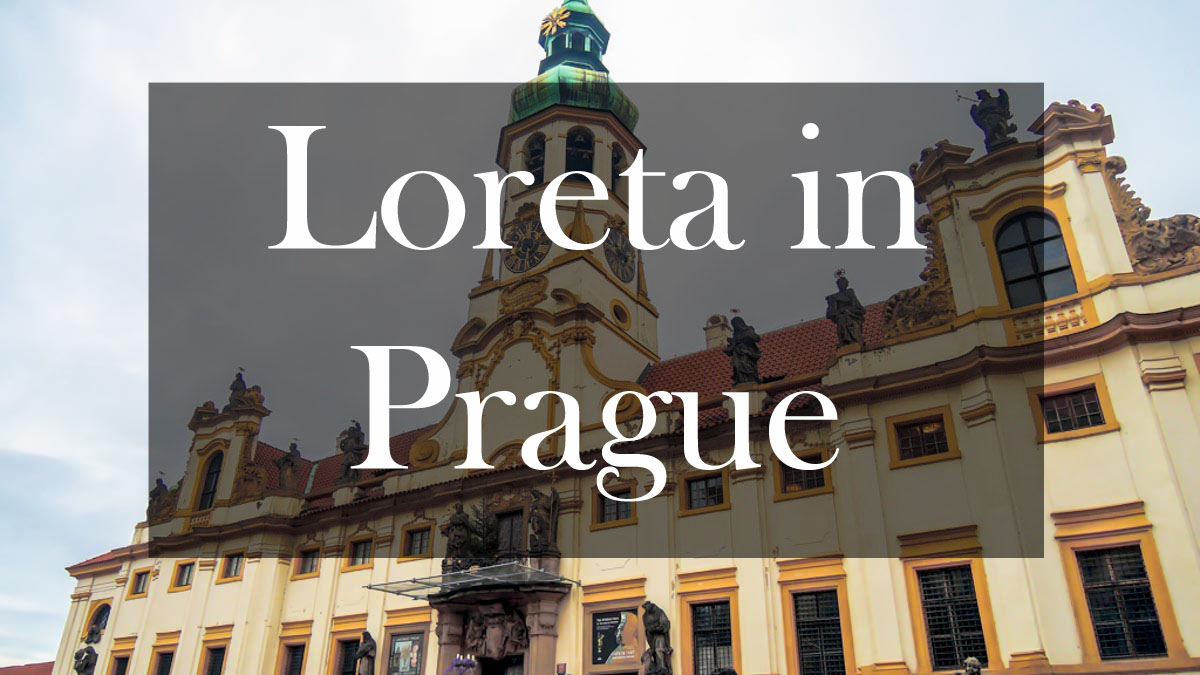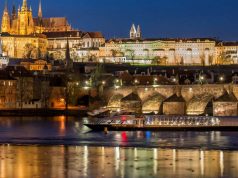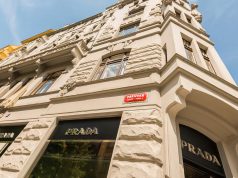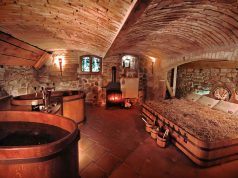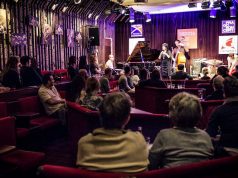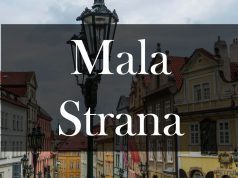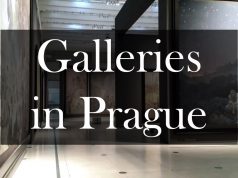Prague Loreta is an architectural complex of religious character, built in the 17th-18th centuries. This Chapel is a symbolic building that embodies the Holy House (one of the greatest shrines of Catholic Christianity).
Loreta in Prague
History
Loreta is the copy of the Holy House (Santa Casa) from Nazareth, where the Virgin Mary grew up and the place of Annunciation. In the XIII century, the Church transported Holy Hut to the Italian town Loreto. Since that time it became important pilgrim center in Europe. Soon symbolic copies of the Holy Hut appeared in other cities.
The construction of a copy of the Holy Hut in Prague began in 1626 at the Capuchin Monastery. Benigna Katerina von Lobkowicz initiated and financed it. Consecration of the Chapel took place on March 25, 1631.
The Loreta Chapel only resembles the size of a Holy Hut of Nazareth. There are statues of Old Testament prophets and scenes from the life of the Virgin Mary. Inside you can see a statue of the Virgin Mary of the XVII century from the linden tree. Moreover, there is also an artificial crack in the Hut as in the Italian original.
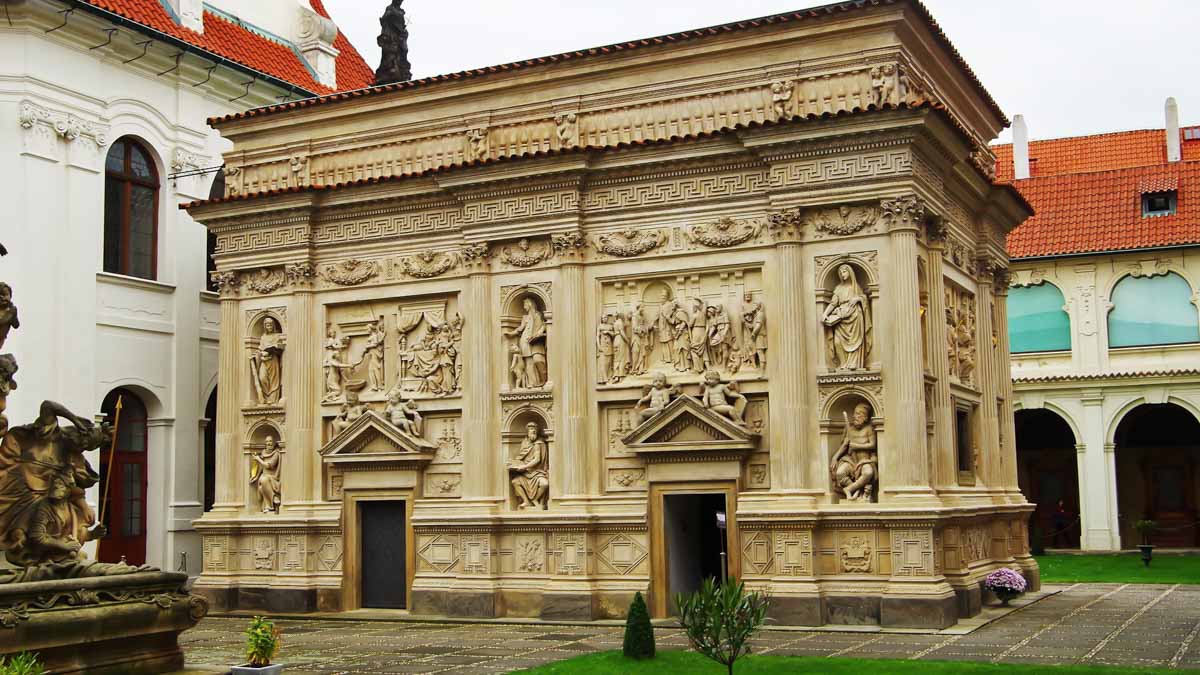
A lightning struck the Holy House to wake up the inhabitants and protect it from a thief.
Near the Chapel you will find two fountains of the middle of the 18th century. One of them has name of “Ascension of the Virgin Mary” and the other is “The Resurrection of Christ”.
In a short period of time, the Prague Loreta Chapel has become an important pilgrimage center for Catholics throughout the region. Consequently, there appeared cloister around the chapel to protect them from the bad weather, the outer side of which is an arcade.
Gradually, constructors erected six chapels along the perimeter of the cloister. In 1722-1738 they built the Church of the Nativity of the Lord.
Decorations
The modern architectural appearance of the complex of the Prague Loreta fully formed in the 18th century. Christophe Dientzenhofer and his son Kilian Ignaz rebuilt the western part of the cloister into a ceremonial facade in the late Baroque style.
They created three decorative pediments and an attic, decorating it with a series of sculptures (Virgin Mary, Archangel Gabriel, St. Christopher, St. Anne and the Evangelists).

Furthermore, the front entrance is framed by the sculptures of St. Anthony of Padua and St. Francis of Assisi, Joseph and John the Baptist.
Corner chapels have sculptural images decorations of St. Felix of Cantalice before Madonna (left) and St. John of Nepomuk with angels (right). In front of the facade is a terrace enclosed by handrails with 19 statues and 9 sculptural groups of angels. They carry cartouches with reliefs on which are depicted scenes from the life of the Virgin Mary.
Inside the Mary’s house is a silver altar and a wooden statue of St Mary with a baby Jesus that was made in the 17th century.
Church of the Nativity of Lord
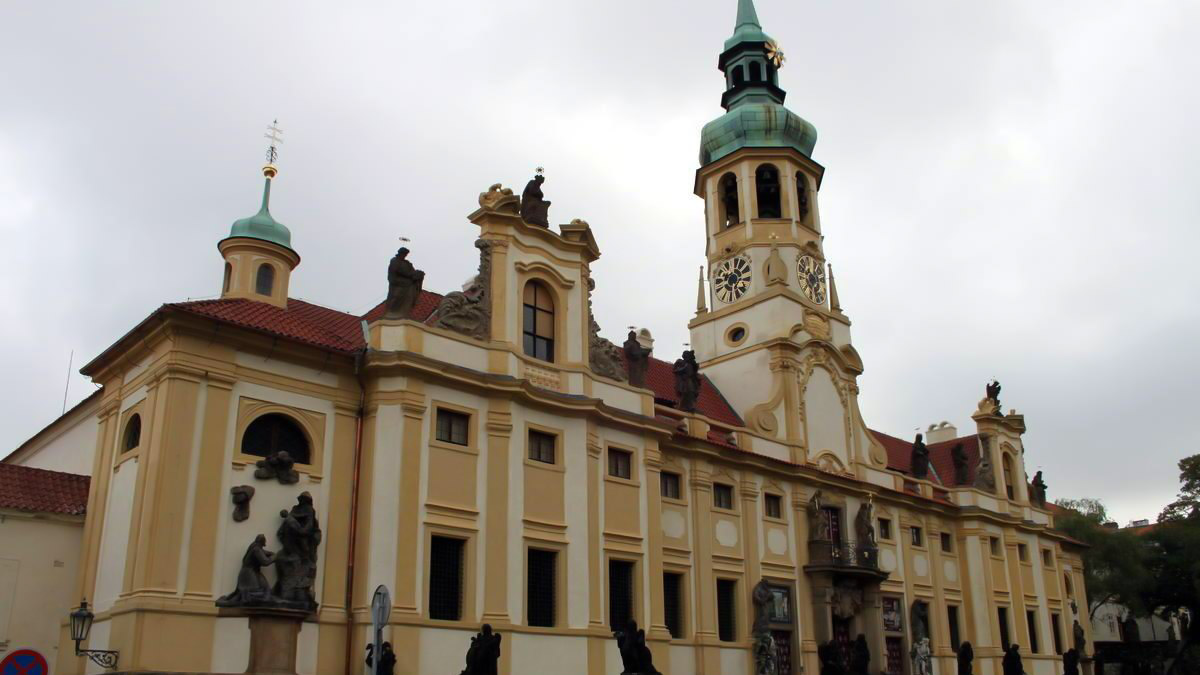
The church was consecrated in 1737 and is famous for a picture of “The Adoration of the Infant Jesus”. Opposite the altar there is an organ. While visiting it, pay attention how many little angels adorn the organ. Almost each of them keeps in hands its own musical instrument.
Besides, sometimes tourists can enjoy an organ music playing in the Church. Usually it is on Saturdays at 3 p.m.
Loreta Treasure
Exhibits in the Loreta’s collection are known far beyond the borders of the Czech Republic. But the bigger part of the treasures was lost. During the wars with Napoleon they were turned into coins, or illegally seized by the state for museums after the end of World War II.
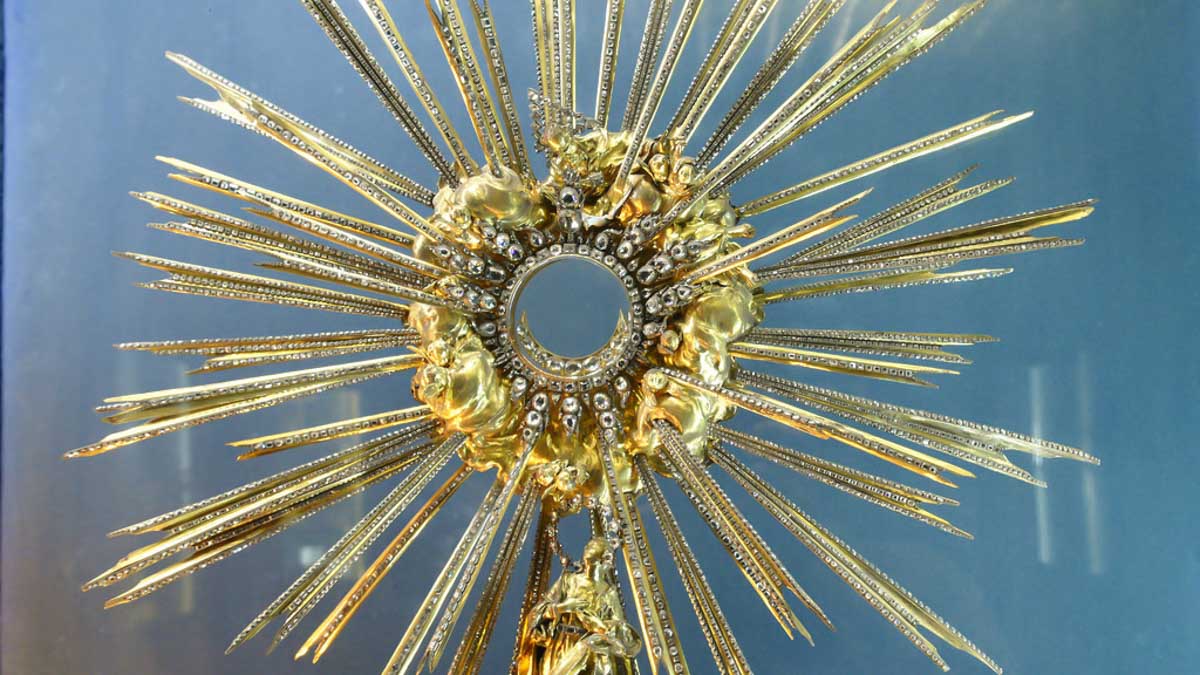
The oldest relics of the treasury are the medieval gothic silver gilded chalice (1510) and the Prague Sun with 6222 diamonds. Also it houses home altars, reliquaries, crowns of a miraculous statue of Our Lady of Loreta, carved ivory, small sculptures, paintings and jewelry.
Most noteworthy that they are open for public here.
Carillon
The clock tower was erected in 1693 and there is a carillon on the top. It has analogues in the Netherlands (Amsterdam and Delft), Belgium (Bruges) and Germany (Berlin). The total number of bells is 30.
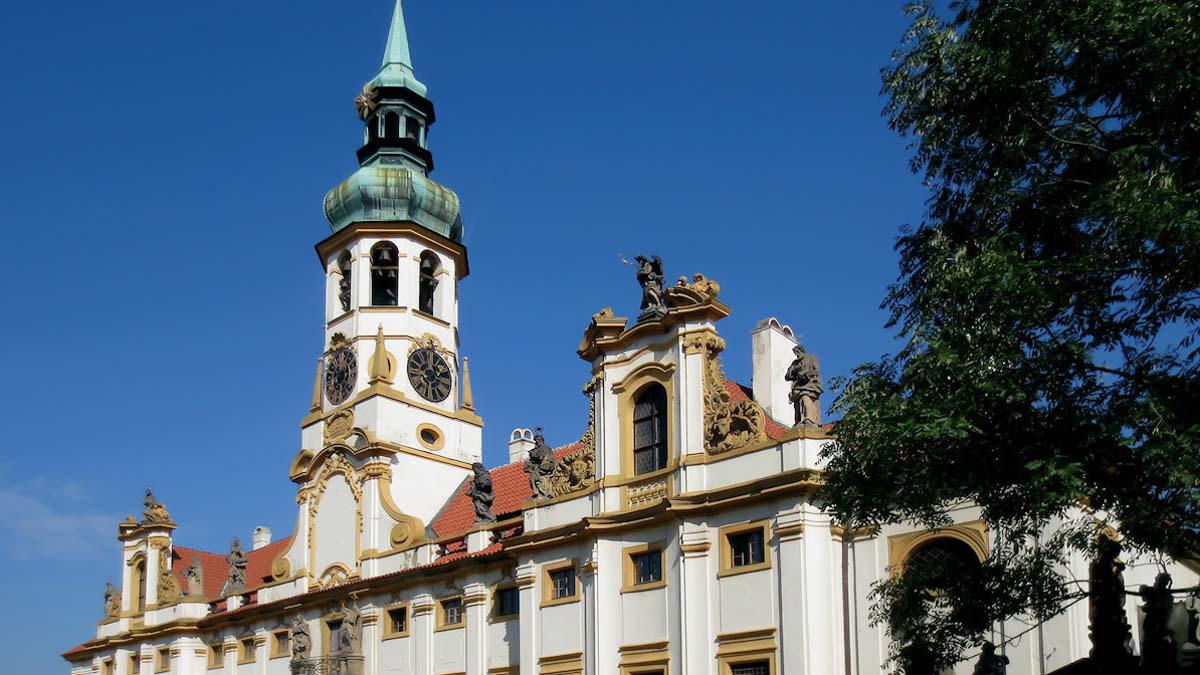
Watchmaker master Peter Neumann made the carillon in a way that the mechanism reproduces the anthem of the Virgin Mary – “A Thousand Times We Greet Thee”. Visitors of the Loreta in Prague can hear it every hour from 9 a.m. to 6 p.m. The citizens of Prague considered the sound of the Loreta bells healing.
Church of Our Lady of Sorrows
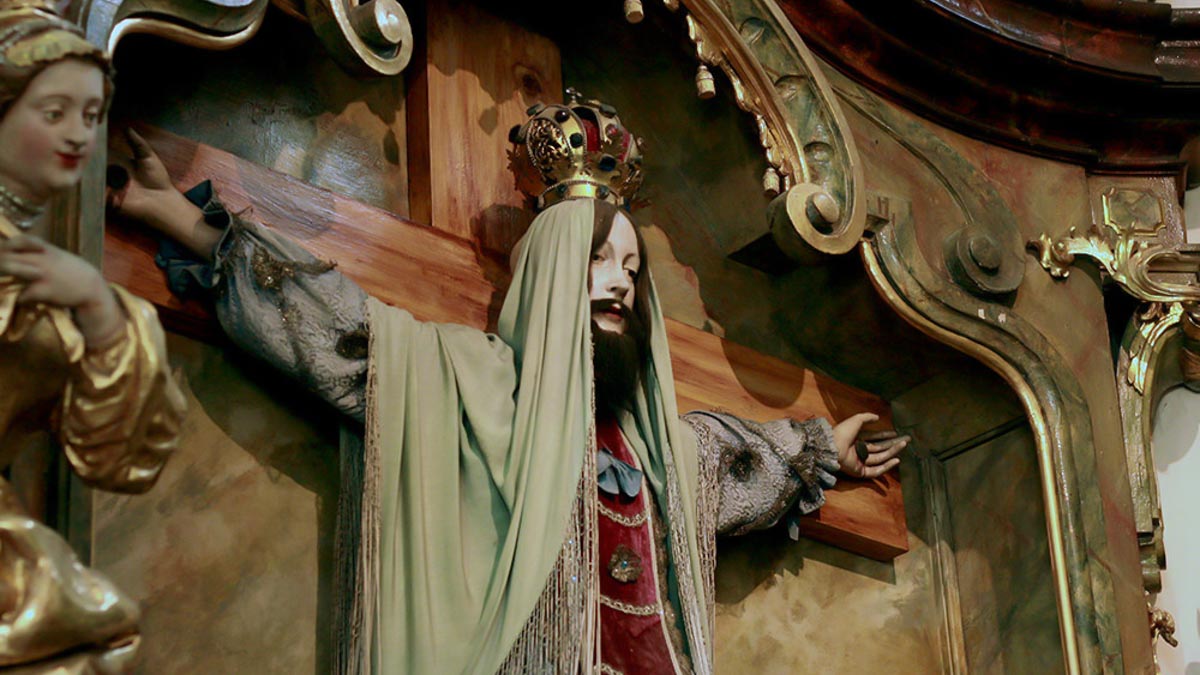
The statue of a bearded lady “Statue of St. Wilgefortis” may surprise you there. There is a legend about the girl whose father insisted on her to marry against her wish.
After a night of tearful prayers she awoke with a beard. As a result the wedding did not happen. But it didn’t make her happy as her father gave an order to crucify her. Later she became a saint patron of the needy and the godforsaken.
Opening hours and entrance fee
Working hours of Loreta:
- 1st of November – 31st of March: 9.30 – 16.00
- 1st of April – 31st of October: 9.00 – 17.00
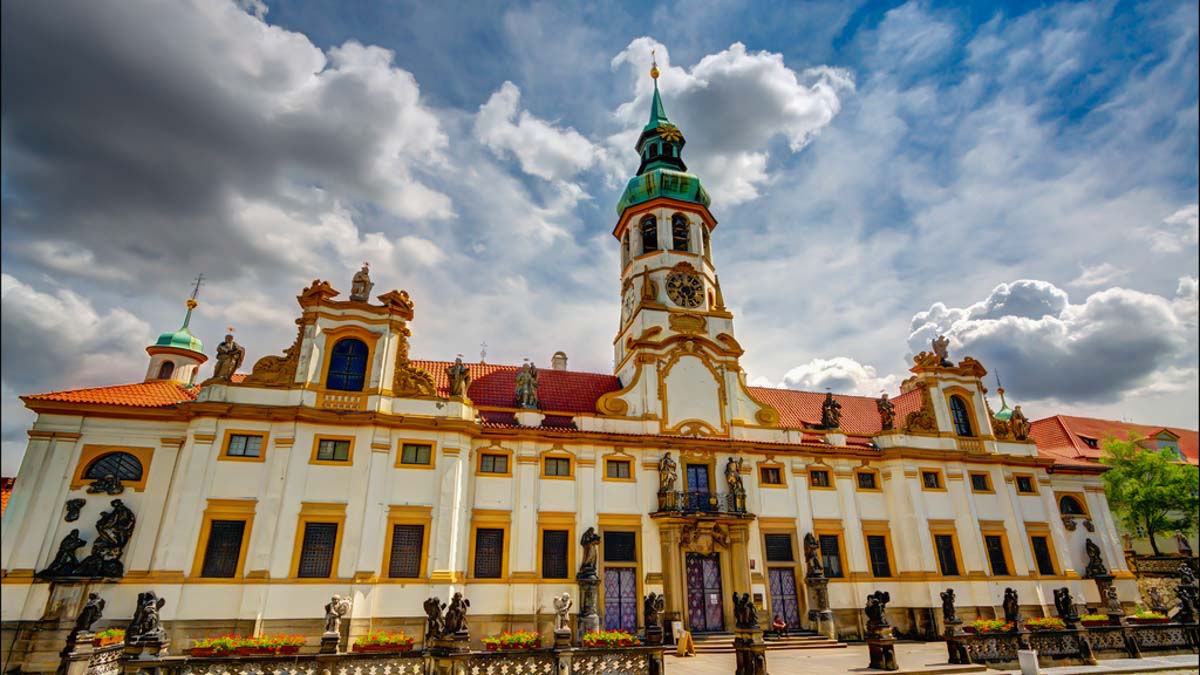
Entrance fee:
- Basic – 150 CZK (adults)
- Children 6-15 y.o. – 70 CZK
- Reduced – 130 CZK
- Family ticket – 310 CZK
- Photography fee – 100 CZK
How to get there
It is situated not far from Prague Castle. The location of Loreta in Prague is Loretanske namesti 7, Castle District, Prague 1. If you are going there by metro, take line A and go to the station Malostranska. Besides, you can use tram No. 22, 23 and go out on the stop Pohorelec. Learn everything about public Transport in Prague: trams, metro, taxi, Uber.
- If you would like to learn more about Loreta, book a private tour with local tour guide in Prague.





